Kohler International Challenge with Brian Redman 2009
On Wednesday night July 16th 2009 with much anticipation I arrived in Chicago for a weekend of camping, vintage racing, and some track time through the touring offered in Elkhart Lake, Wi about 2.5 hrs drive from Chicago at Road America. Touring while not racing still allows one to experience the track and stretch your cars legs if you so desire and depending on the traffic.
Road America is one of Americas premiere racetracks and one of the longest at approximately 4 miles with a variety of challenging corners, and elevations. What a beautiful place to be and with RACE CARS everywhere.
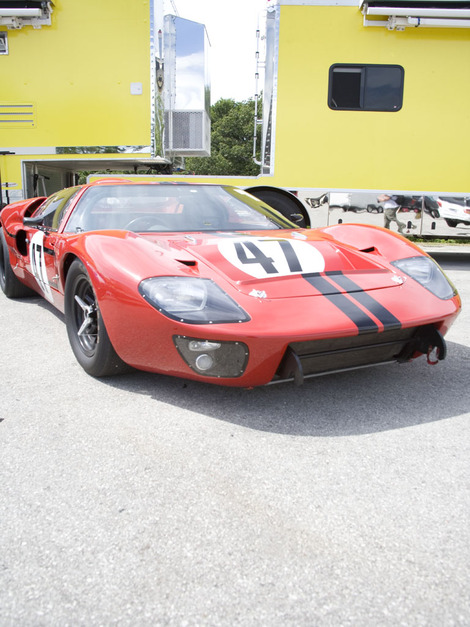
This years featured marque was the GT40. And let me tell you there where a lot of cars to see from originals to the remanufactured they were out in force. Ford and Shelby did not produce the numbers that were in attendance. One of the other great things about RA is the atmosphere is relaxed you can wander the pits look at the cars close up talk to the crews, drivers and owners or walk the course and perch in the stands at any of the corners or straightaways. It is truly a great place to relax and just BE.
What a great vid a must see!!
All week we monitored the weather NOT good. Rain Rain Rain only thunderstorms in the forecast. Thursday morning it was cloudy but no rain.
With trepidation and having packed my friends SUV (base camp car) off we went (my friend Peter drove his cobra up). The drive up was great no rain. As we approached RA the clouds were dark and thought here we go with the storms. But the sun appeared and the darkness seemed far away. So on and off it rained during the weekend mostly at night which was great for the racing. We camped in our favorite place the carousel campground which is a wide almost half circle sweeping series of turns 9 & 10. Setting up a chair on top of our picnic table afforded a wonderful view of the cars as they came charging down a small shoot and down to a hard almost hairpin turn #8 and accelerate into the carousel.
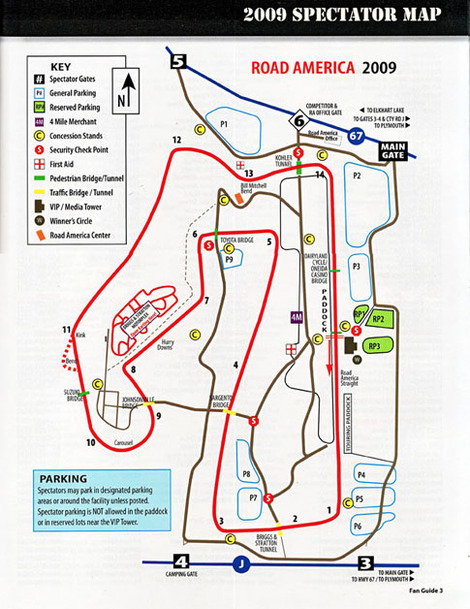
The Kohler International Challenge was a four day event with tech and practices thursday; more practice on friday; qualifing on saturday, and racing all day sunday. The classes are extensive and as follows:
Group 1:
Formula Atlantic, FB, F2, Sports Racers, 5000 (1966-1983) (1966-1976) There were 30 cars in this class - what a collection of different Lolas, Chevrons, Marches, Tyrell, and Lotus incredible cars very loud and FAST.
Group 2
Monoposto Classic Formula Cars (through 1972) There were 32 cars in this class open wheel Lolas, Brabhams, Chevrons, Lotus and other makers. The formula cars are always very fast no matter how old the are.
Group 3
Vintage Small/Medium Displacement Production Cars, Sedans, Select Sport Racers (through 1972) There were 37 cars in this class broken down into various subclasses. A variety of Porches, Triumphs, MG's, Austin Healeys, Alfa Romeros, Minis the list goes on but mostly 365 Porsches.
Group 4/5
Vintage Sports Racing Cars (through 1960); Vintage A & B Production (through 1962); Early Historic Sports Racing Cars (through 1972) There were 43 cars in this class one of my favorite classes including Scarabs, Lolas, Corvettes, Devins, Elvas, Listers all incredible shapes and interesting forms loud and fast.
Group 6
Big Bore Production Cars & Sedans (through 1974) There were 43 cars in this class Corvettes, Camaros, Mustangs, Cobras, Porsches, the motors pushing the big #'s Many of the cars were from the Trans-Am era. An ever expanding class growing in popularity.
Group 7
Monoposto Formula 70, Formula B/Formula Atlantic (through 1979) FIA Prototypes, GT's, Sports Racers (after 1972) There were 36 of the most pound per horse power beasts on the pavement my all time favorite cars extremely extremely FAST. McLarens and Lolas of different models dominate this class. Their distinctive velocity pipes jutting out at angles behind the drives cockpit. They truly are insane machines - the sound - the horsepower and speed.
Group 8
Historic/Post Historic Medium Displacement Production Cars & Sedans (through 1989) There were 43 cars in this class crowded field Porsches, BMWs, MGBs, Lotus, Datsun Stock production cars limited modifications allowed.
Group 9
Post Historic Formula One/Indy Car Challenge There were 17 cars racing in that class. Names such as McLaren, Tyrell, Lola, March, Benetton. All beautiful open wheel classics.
Group 10
Post Historic GT Cars GTS, GTO, GTX (1972-1999) 35 entries in this class Audis, Porsches, Corvettes, Mustangs, Porsche, Ferrari, Ford GT, continuation Cobras, Vipers and other more modern cars. Big field fast cars alot of fun to watch especially in packs.
The GT 40's being the featured marque Brian Redman had this to say. "The GT 40 has always been regarded with the greatest affection by its drivers. Strong, comfortable and safe, this fine car epitomizes the fabulous long-distance racing of the 1960's. This weekend at Road America, we are delighted to celebrate the history of this iconic race car."
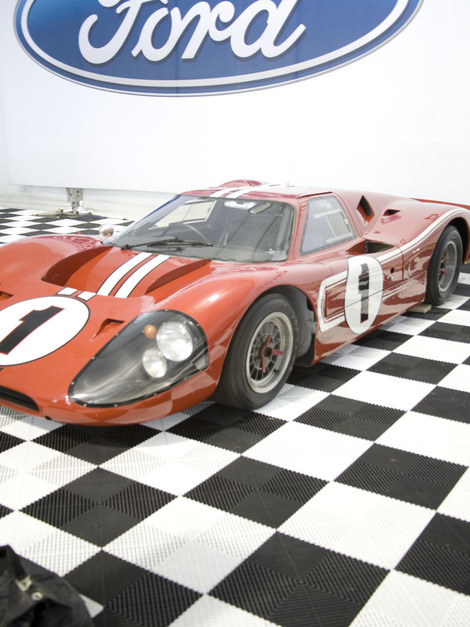
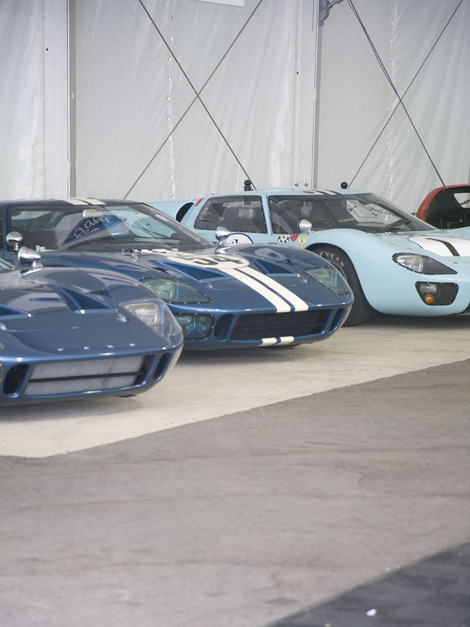
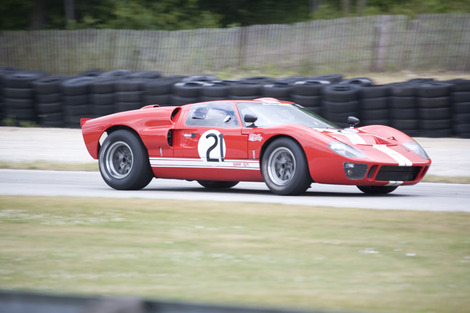
History
Henry Ford II had wanted a Ford at Le Mans since the early 1960s. In the spring of 1963, Ford reportedly received word through a European intermediary that Enzo Ferrari was interested in selling to Ford Motor Company. Ford reportedly spent several million dollars in an audit of Ferrari factory assets and in legal negotiations, only to have Ferrari unilaterally cut off talks at a late stage. Ferrari, who wanted to remain the sole operator of his company's motor sports division, was angered when he was told that he would not be allowed to race at the Indianapolis 500 if the deal went through. Enzo cut the deal off out of spite and Henry Ford II, enraged, directed his racing division to find a company that could build a Ferrari-beater on the world endurance-racing circuit.
To this end Ford began negotiation with Lotus, Lola, and Cooper. Cooper had no experience in GT or prototype and its performances in Formula One were declining.
Lotus was already a Ford partner for their Indy 500 project. Ford executives already doubted the ability of Lotus to handle this new project. Colin Chapman probably had similar views as he asked a high price for his contribution and insisted that the car (which became the Lotus Europa) should be named a Lotus-Ford, an attitude that can be viewed as polite refusal. The Lola proposal was chosen, since Lola had used a Ford V8 engine in their mid-engined Lola Mk 6 (also known as Lola GT). It was one of the most advanced racing cars of the time, and made a noted performance in Le Mans 1963, even though the car did not finish. However, Eric Broadley, Lola Cars' owner and chief designer, agreed on a short-term personal contribution to the project without involving Lola Cars. The agreement with Eric Broadley included a one year collaboration between Ford and Broadley and the sale of the two Lola Mk 6 chassis built to Ford. To form the development team, Ford also hired the ex-Aston Martin team manager John Wyer. Ford Motor Co. engineer Roy Lunn was sent to England; he had designed the mid-engined Mustang I concept car powered by a 1.7 L V4. Despite the small engine of the Mustang I, Lunn was the only Dearborn engineer to have some experience with a mid-engined car.
Broadley, Lunn and Wyer began working on the new car at Lola Factory in Bromley. At the end of 1963 the team moved to Slough, England near Heathrow airport. Ford established a new subsidiary under the direction of Wyer, Ford Advanced Vehicles Ltd to manage the project. The first chassis built by Abbey Panels of Coventry was delivered on March 16, 1963. The first "Ford GT" the GT/101 was unveiled in England on April 1 and soon after exhibited in New York. It was powered by the 4.2 L Fairlane engine with a Colotti transaxle, the same power plant was used by the Lola GT and the single-seater Lotus 29 that came in a highly controversial second at the Indy 500 in 1963. (A DOHC head design was used in later years at Indy. It won in 1965 in the Lotus 38.) The Ford GT40 was first raced in May 1964 at the Nürburgring 1000 km race where it retired with suspension failure after holding second place early in the event. Three weeks later at the 24 Hours of Le Mans, all three entries retired although the Ginther/Gregory car led the field from the second lap until its first pitstop. February 1965 saw Ken Miles and Lloyd Ruby take a Shelby American entered GT40 to victory in the Daytona 2000 km.
The experience gained in 1964 and 1965 allowed the 7-litre Mk II to dominate the 24 Hours of Le Mans race in 1966 with a 1-2-3 result. The finish, however, was clouded in controversy: in the final few hours, the Ford GT of New Zealanders Bruce McLaren and Chris Amon closely trailed the leading Ford GT driven by Englishman Ken Miles and New Zealander Denny Hulme. Ford team officials faced a difficult choice. They could allow the drivers to settle the outcome by racing each other – and risk one or both cars breaking down or crashing. They could dictate a finishing order to the drivers – guaranteeing that one set of drivers would be extremely unhappy. Or they could arrange a tie, with the McLaren/Amon and Miles/Hulme cars crossing the line side-by-side. The team chose the last and informed McLaren and Miles of the decision just before the two got in their cars for the final stint. Then, not long before the finish, the Automobile Club de l'Ouest (ACO), organizers of the Le Mans event, informed Ford that the geographical difference in starting positions would be taken into account at a close finish – meaning that the McLaren/Amon vehicle, which had started perhaps 60 feet (18 m) behind the Hulme-Miles car, would have covered slightly more ground over the 24 hours and would therefore be the winner. Secondly, Ford officials admitted later, the company's contentious relationship with Miles, its top contract driver, placed executives in a difficult position. They could reward an outstanding driver who had been at times extremely difficult to work with, or they could decide in favour of drivers (McLaren/Amon) with less commitment to the Ford program but who had been easier to deal with. Ford stuck with the orchestrated photo finish but Miles, deeply bitter over this decision after his dedication to the program, issued his own protest by suddenly slowing just yards from the finish and letting McLaren across the line first. Sadly and ironically, Miles died in a testing accident just two months later. Miles was thus denied his deserved unique achievement of winning Sebring, Daytona and Le Mans in the same year, the last before his death.
Miles' death occurred at the wheel of the Ford "J-car", an iteration of the GT40 that included several unique features. These included an aluminum honeycomb chassis construction and a "breadvan" body design that experimented with "kammback" aerodynamic theories. Unfortunately, the fatal Miles accident was attributed at least partly to the unproven aerodynamics of the J-car design, and the team embarked on a complete redesign of the car, which became known as the Mk IV. The Mk IV, a newer design with a Mk II engine but a different chassis and a different body, won the following year (when four Mark IVs, three Mark IIs and three Mark Is raced). The high speeds achieved in that race caused a rule change, which already came in effect in 1968: the prototypes were limited to the capacity of to 3.0 L, the same as in Formula One. This took out the V12-powered Ferrari 330P as well as the Chaparral and the Mk. IV. If at least 50 cars had been built, sportscars like the GT40 and the Lola T70 were allowed, with a maximum of 5.0 L. John Wyer's revised 4.7 L Mk I won the 24 hours of Le Mans race in 1968 against the fragile smaller prototypes. This result added to four other round wins for the GT40 gave Ford victory in the 1968 International Championship for Makes. The GT40's intended 3.0 L replacement, the Ford P68, proved a dismal failure. In 1969, facing more experienced prototypes and the new yet still unreliable 4.5 L flat-12 powered Porsche 917s, the winners Ickx/Oliver managed to beat the remaining 3.0 L Porsche 908 by just a few seconds with the already outdated GT40 (in the very car that had won in 1968 - the legendary GT40P/1075). Apart from brake wear in the Porsche and the decision not to change pads so close to the race end, the winning combination was relaxed driving by both GT40 drivers and heroic efforts at the right time by (at that time Le Mans' rookie) Jacky Ickx, who won Le Mans five times more in later years. In 1970, the revised Porsche 917 dominated, and the GT40 had become obsolete.
Various versions
The Mk I was the original Ford GT40. Early prototypes were powered by 4.2 L (260 cu.in) engines; production models were powered by 4.6 L (289 cu.in) engines, also used in the Ford Mustang. Several prototype models had roadster bodywork.
The Ford X1 was a roadster built to contest the Fall 1965 North American Pro Series, a forerunner of CanAm, entered by the Bruce McLaren team and driven by Chris Amon. The car had an aluminum chassis built at Abbey Panels and was originally powered by a 4.6 L (289ci) engine. The real purpose of this car was to test several improvements originating from Kar Kraft, Shelby and McLaren. Several gearboxes were used: a Hewland LG500 and at least one automatic gearbox. It was later upgraded to Mk II specifications with a 7.0 LC (427ci) engine and a standard four ratio Kar Kraft gearbox, however the car kept specific features such as its open roof and lightweight chassis. The car went on to win the 12 Hours of Sebring in 1966.
The Mk II used the 7.0 L (427 CID) engine from the Ford Galaxie. For Daytona 1967, two Mk II models (chassis 1016 and 1047) were fitted with Mercury 7.0 L engines. Mercury is a Ford Motor Company division, and Mercury's 427 was the exact same engine as Ford's with different logos. A batch of wrongly heat treated input shafts in the transaxles sidelined virtually every Ford in the race, however, and Ferrari won 1-2-3.
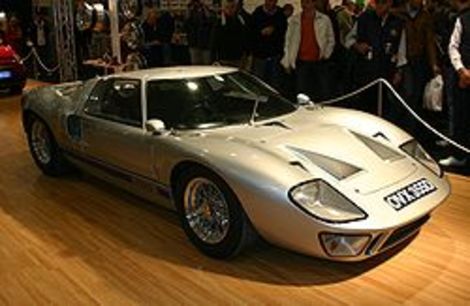
Ford GT40 road version (see my recreated article from Sports Car Graphic May 1966 posted earlier here)
The Mk III was a road-car only, of which 7 were built. The car had four headlights, the rear part of the body was expanded to make room for luggage, the 4.6 L engine was detuned to 335 bhp (250 kW), the shocks were softened, the shift lever was moved to the center and the car was available with the steering wheel on the left side of the car. The most famous Mk III is GT40 M3 1105, a blue left hand drive model delivered in 1968 in Austria to Herbert von Karajan. As the Mk III wasn't very appealing aesthetically (it looked significantly different from the racing models), many customers interested in buying a GT40 for road use chose to buy a Mk I that was available from Wyer Ltd.
In an effort to develop a car with better aerodynamics and lighter weight, it was decided to retain the 7 liter engine, but redesign the rest of the car. In order to bring the car more "in house" and lessening partnership with English firms, Ford Advanced Vehicles was sold to John Wyer and the new car was designed by Ford's studios and produced by Ford's subsidiary Kar Kraft under Ed Hull. There was also a partnership with the Brunswick Aircraft Corporation for expertise on the novel use of honeycomb aluminium panels bonded together to form a lightweight but rigid "tub". The car would make full use of the new and more liberal Appendix J regulations for race car construction, and was therefore known as the J-car.
The first J-car was completed in March, 1966 and set the fastest time at the Le Mans trials that year. The tub weighed only 86 lb (39 kg), and the entire car weighed only 2,660 lb (1,210 kg), 300 lb (140 kg) less than the Mk II. It was decided to run the MkIIs due to their proven reliability, however, and little or no development was done on the J-car for the rest of the season. Following LeMans, the development program for the J-car was resumed, and a second car was built. During a test session at Riverside International Raceway in August 1966, with Ken Miles driving, the car suddenly went out of control at the end of Riverside's high-speed, 1-mile-long back straight. The honeycomb chassis did not live up to its design goal, shattering upon impact, bursting into flames and killing Miles. It was decided that the unique, flat-topped "bread van" aerodynamics of the car, lacking any sort of spoiler, were implicated in generating excess lift, and a more conventional but significantly more aerodynamic body was designed for the Mk IV. The Mk. IV ran in only two races (Sebring 1967 and Le Mans 1967) but won both events.
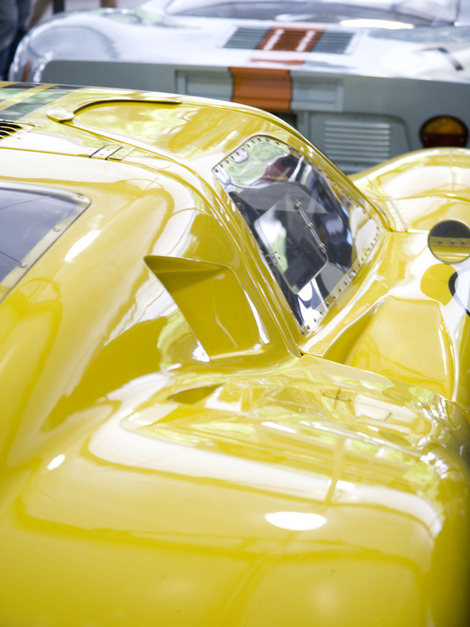
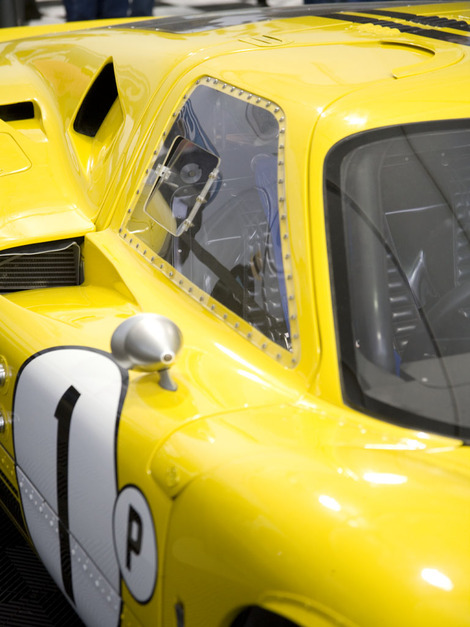
GT40 Mk IV
The Mk IV was built around a reinforced J chassis powered by the same 7.0 L engine as the Mk II. Excluding the engine, the Mk IV was totally different from other GT40s, using a specific chassis and specific bodywork. As a direct result of the Miles accident, the team installed a NASCAR-style steel-tube roll cage in the Mk. IV, which made it much safer but negated most of the weight saving of the honeycomb-panel construction. Dan Gurney often complained about the weight of the Mk IV, since the car was 600 pounds heavier than the Ferraris it raced. The installation of the roll cage was ultimately credited by many with saving the life of Mario Andretti, who crashed violently in a Mk. IV during the 1967 Le Mans, but escaped with minor injuries. The Ford G7A was a CanAm car using the J chassis. Unlike the earlier Mk.I,II and III cars, which were entirely British, the Ford J and Mk. IV were built in America by Shelby.
Continuation & Replica Models
GT40/R Competition at Road America (Built by Pathfinder Motorsports/Superformance) This is the well-known chassis GT40P/2090R that won at Watkins Glen. GT40/R Competition
A "Roaring Forties" replica of a 1965 Ford GT40 in Shelby livery on display at the 2005 United States Grand Prix As the price and the rarity of the Ford GT40 have increased, so has the demand for a continuation model - such as the Pathfinder Motorsports/Superformance GT40/R - as well as cheaper cosmetic imitations and replicas of varying quality. There have been several kit cars and replicas made that have been inspired by the Ford GT40, as well as a continuation (exact and licensed replica):
GT40/R Competition United States. An authentic GT40 built by Superformance, and the only race-version continuation model fully licensed by Safir GT40 Spares (Ltd). Approved for vintage racing by the Historic Sportscar Racing association (HSR) and the Sportscar Vintage Racing Association (SVRA), it is distributed by Pathfinder Motorsports LLC. A Pathfinder Motorsports Racing GT40/R - chassis number GT40P/2090R - won in its class at the 2009 US Vintage Grand Prix at Watkins Glen and the 2009 NY Governor's Cup Race.
Superformance - the Superformance GT40 is an extremely accurate continuation model with approximately 85% interchangeable parts with the original; these cars are licensed by Safir GT40 Spares and carry continuation chassis numbers from the original cars
KVA GT40 replica manufacturer in England
Roaring Forties Australian Based replica manufacturer
Auto Futura CAV GT South African replica manufacturer
AvengerGT-12 - 1960s VW-based Fiberfab Avenger GT replica manufacturer
Fiberfab Valkyrie - 1960s/1970s V-8 powered, tube frame with Corvair transaxle and suspension. Fiberfab Valkyrie replica manufacturer
ERA performance replica manufacturer
v8archie - rebodied Pontiac Fiero replica manufacturer
Race Car Replicas replica manufacturer
Lone Star Classics replica manufacturer
Tornado Sports Cars - based in England, they are the longest running replica maker of the GT40
MDA - replica manufacturer based in England
DRB Sports Cars - replica manufacturer based in Australia
Turn Ten Racing - a new replica manufacturer located in Canada
GTD40 - one of the most famous GT40 replica kit cars ever to be built due to its accuracy to the real thing. Continued production until its demise in 1997, due to the failed Spectre R42 project.
GOX Teknik - replica manufacturer based in Sweden, makes both an exact replica and a simpler look-alike.
Africa40 Africa40 GT40 replica manufacturer based in South Africa
Holman Moody Holman Moody, whose GT40 Mark IIs won first, second, and third at Le Mans in 1966, still manufactures a small number of GT40s from the 1966 blueprints.
The most prevalent recreation or remanufactured versions of the car were represented by Superformance and Rouse Racing. They had a huge presence near the tech inspection with many GT 40's and Cobra roadsters as well.

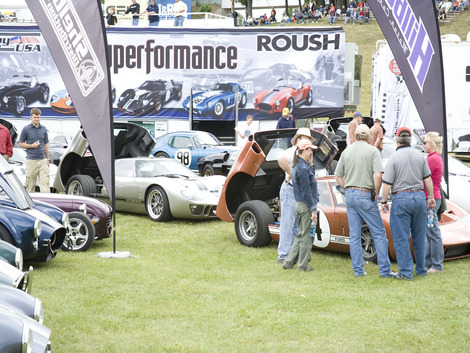

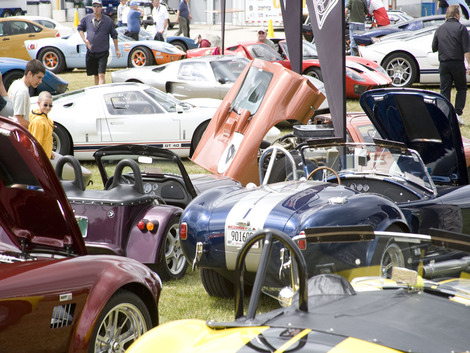
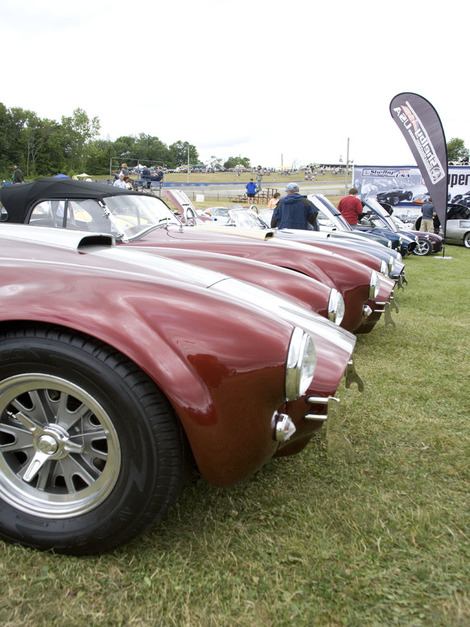
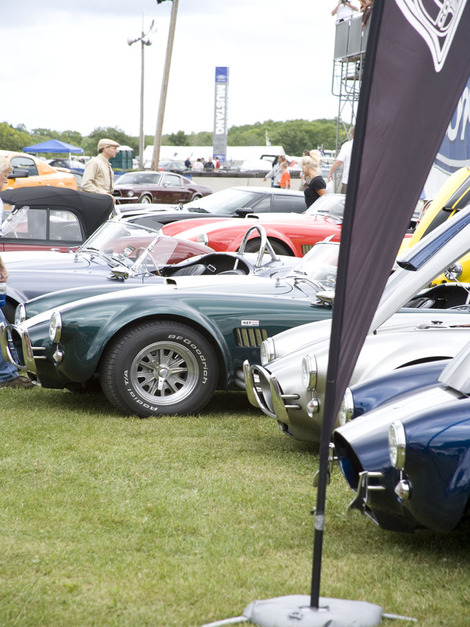
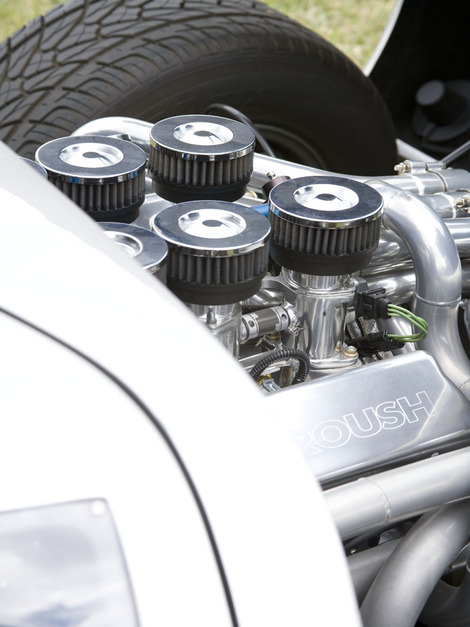
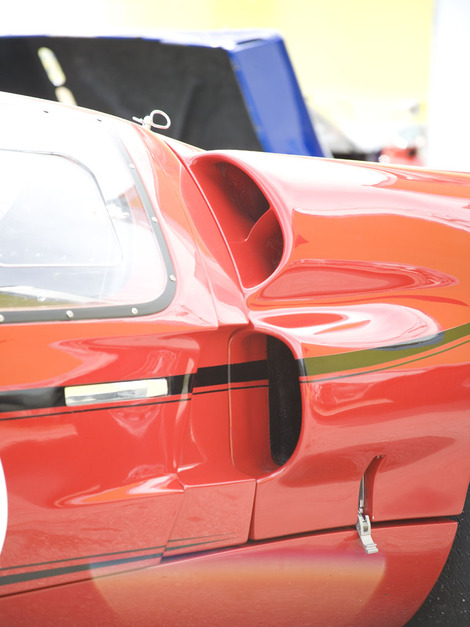
And of course there was a Scarab MK II there one of my personal favorites
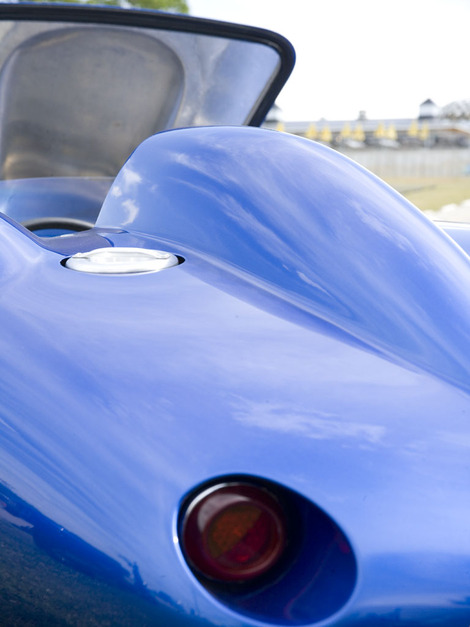
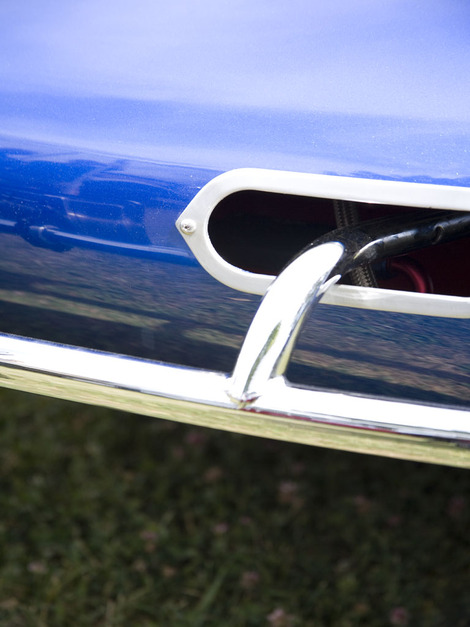

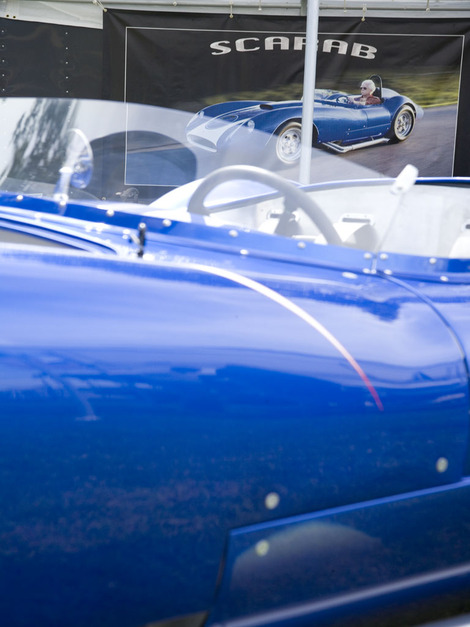
Some random shots and racing action.
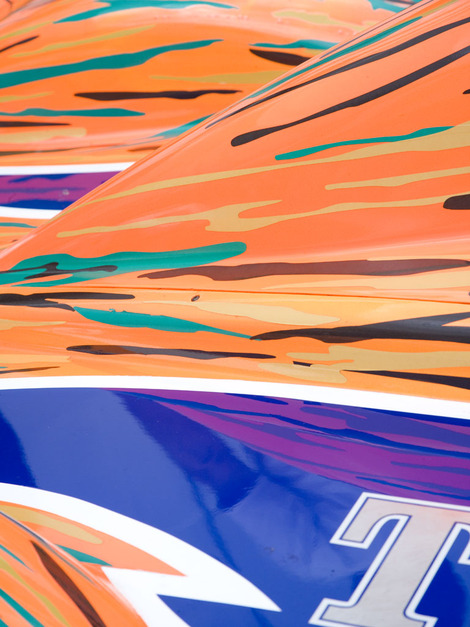
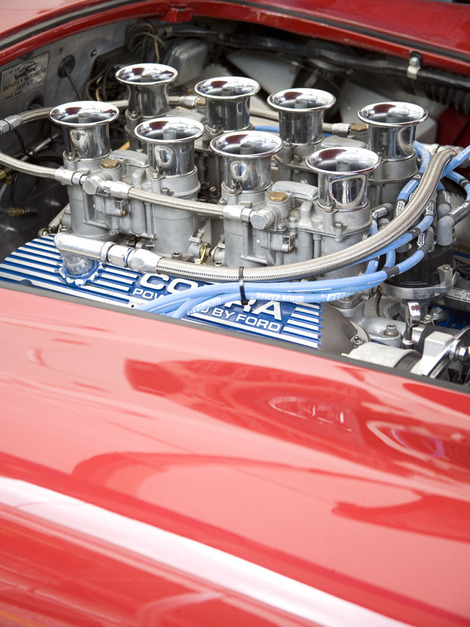
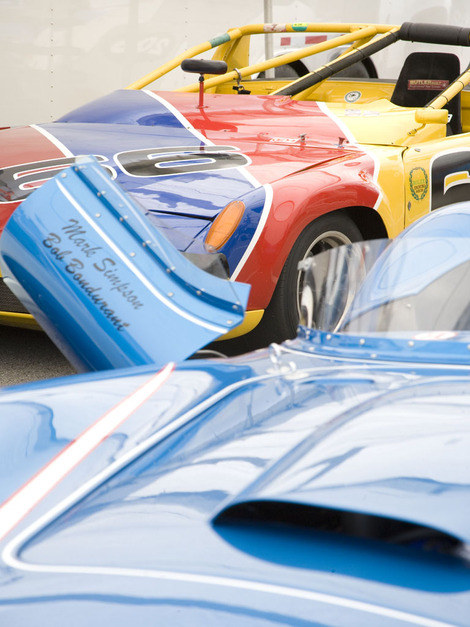
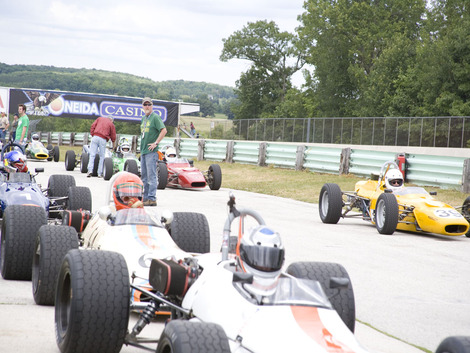

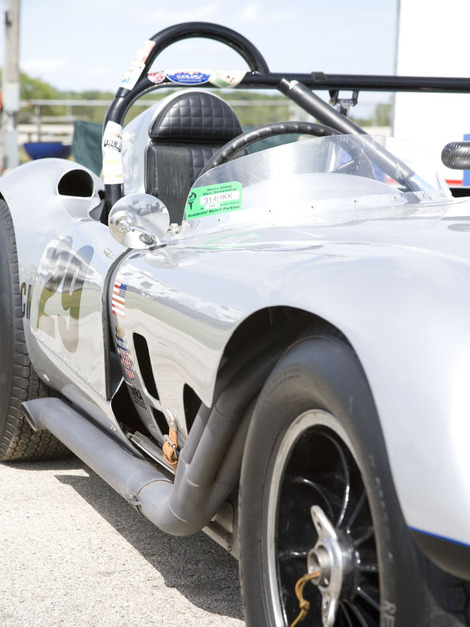
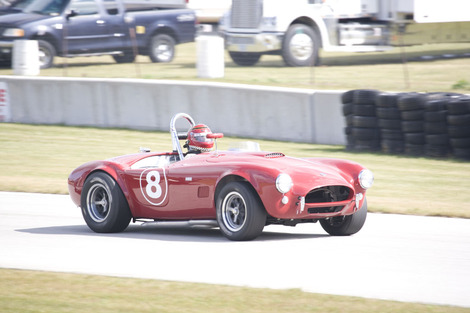
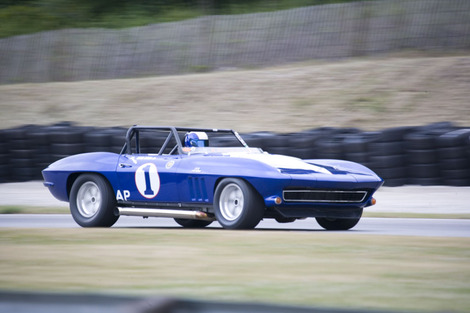
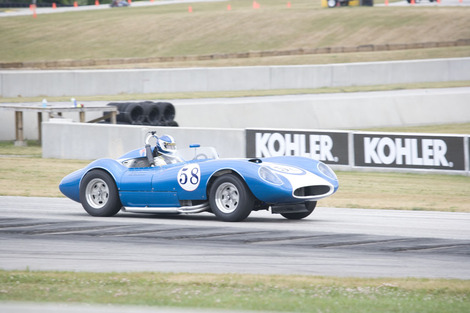
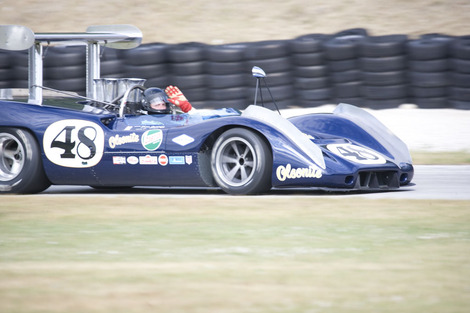
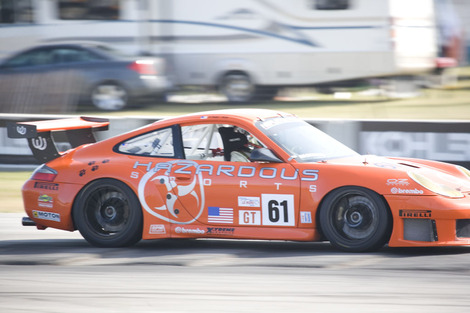
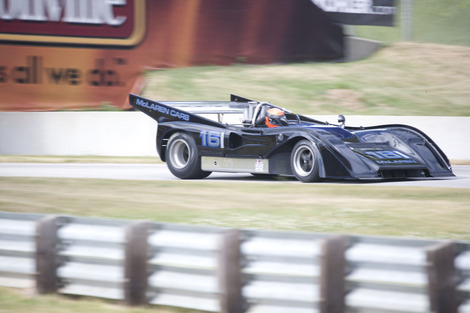
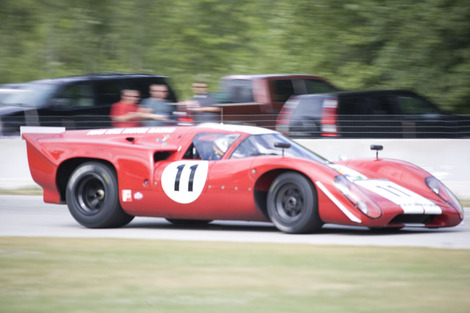

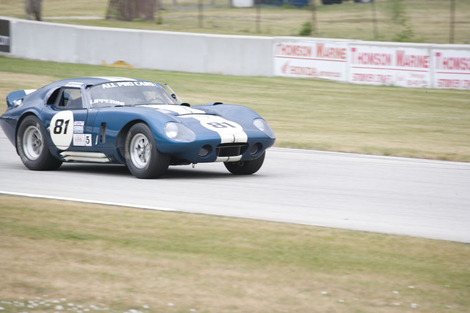
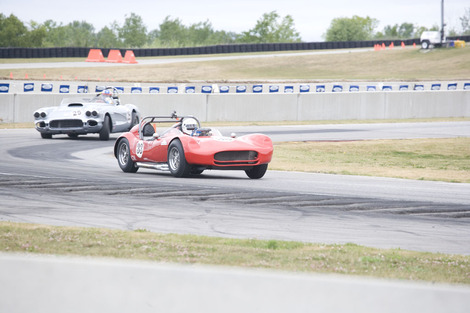
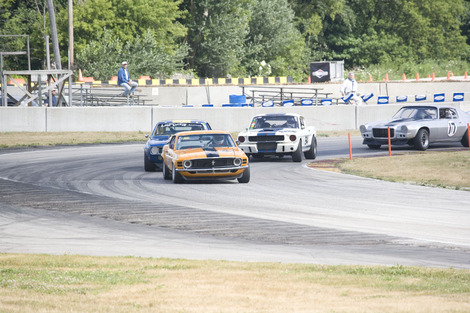
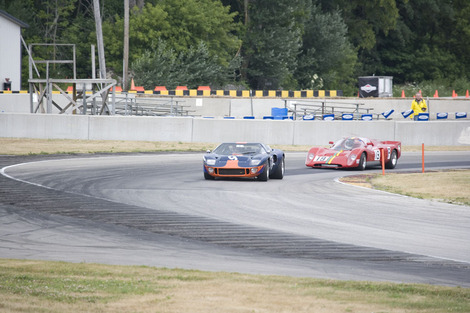
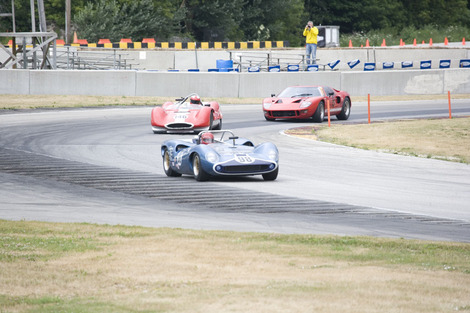
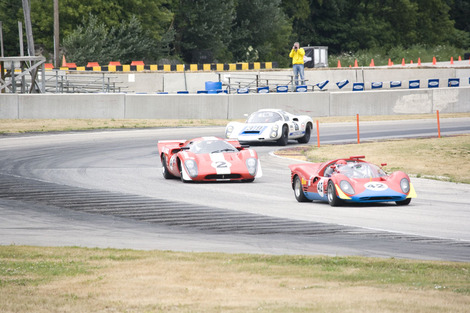
Near by the tech inspection was the Mustang Alley with an overwhelming amount of cars.

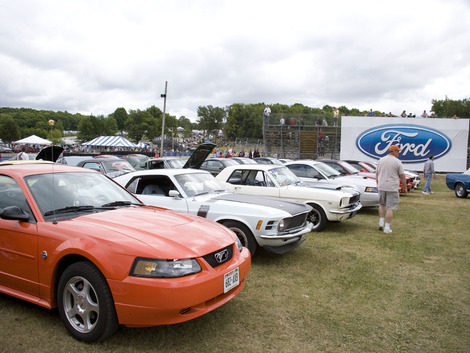
All in all the weekend was great and I look forward to next years event!!!!!!!
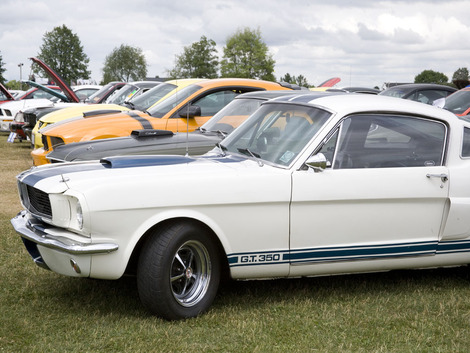
Another great video from event with Brian Redman!!
An exciting ride in a GT 40!!!
Posted 10/11/09 @ 06:30 PM | Tags: Kohler International Challenge, Kohler International Challenge with Brian Redman 2009, GT 40, Ford GT 40 street version, Ford GT 40, Ford Advanced Vehicles Ltd, Superformance GT 40, Superformance MK lll, Scarab, Corvette, Porsche, Historic Vintage Racing, Holman Moody, Lotus, Ferrari beater, McLaren, Tyrell, Road America, Ford Mustang, Lola, Hazardous Sports Porsche, Rouse Racing, GT 40 Mark II